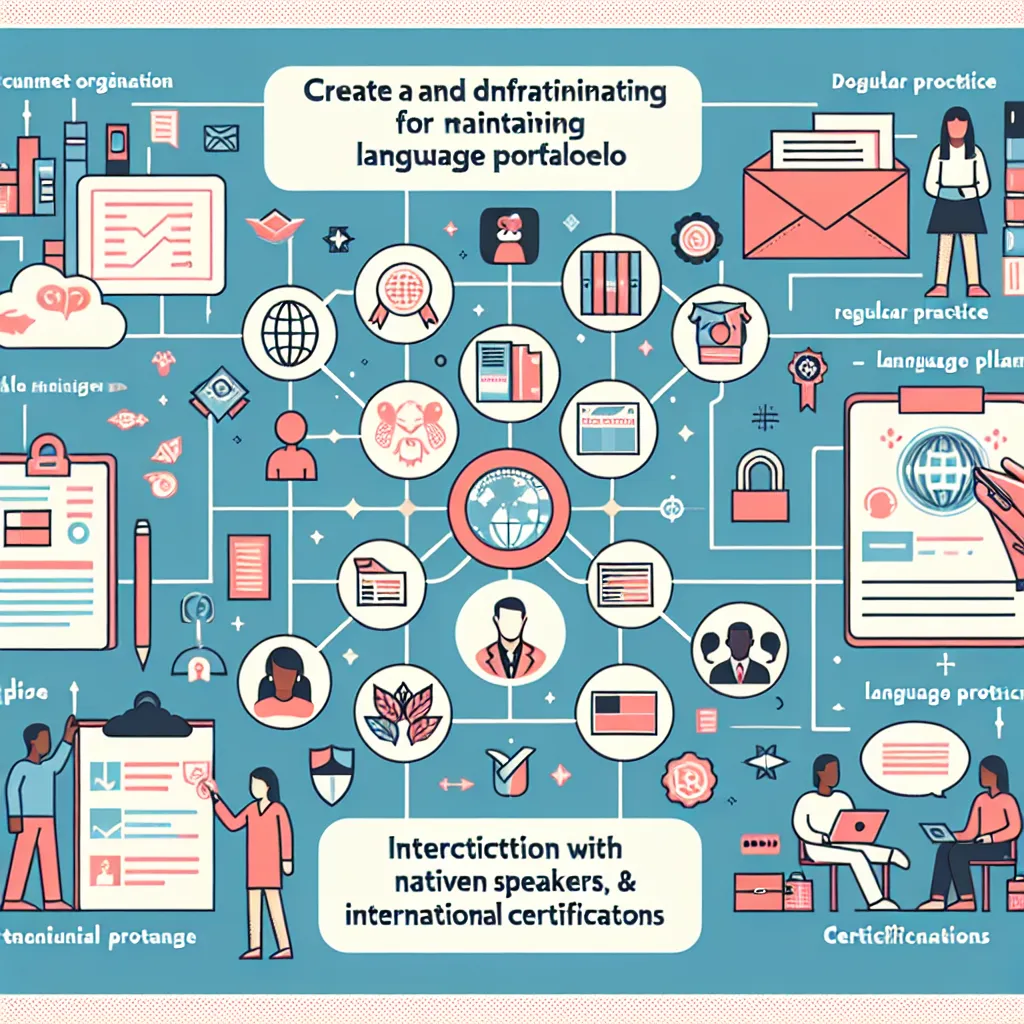Learning English can be a challenging yet rewarding journey. One effective method to enhance your language skills is by creating a language portfolio. This comprehensive guide will explore How To Learn English By Creating Language Portfolios, providing you with valuable insights and practical tips to boost your language proficiency.
What is a Language Portfolio?
A language portfolio is a collection of documents and materials that showcase your language learning progress and achievements. It serves as a personal record of your English language skills, including your strengths, weaknesses, and areas for improvement. By creating and maintaining a language portfolio, you can actively track your progress, set goals, and reflect on your learning journey.
 English language portfolio
English language portfolio
Benefits of Creating a Language Portfolio
Creating a language portfolio offers numerous advantages for English learners:
- Self-assessment: It allows you to evaluate your own progress and identify areas that need improvement.
- Goal-setting: You can set clear, achievable goals and track your progress towards them.
- Motivation: Seeing your achievements and progress can boost your motivation to continue learning.
- Showcasing skills: A portfolio can be used to demonstrate your English proficiency to potential employers or educational institutions.
- Personalized learning: It helps you tailor your learning approach to your individual needs and interests.
How to Create an Effective Language Portfolio
1. Choose a Format
Decide whether you want to create a physical or digital portfolio. Both have their advantages:
- Physical portfolio: Tangible, easy to browse, and can include physical artifacts.
- Digital portfolio: Easy to update, share, and access from anywhere.
2. Collect Essential Components
Include the following elements in your language portfolio:
- Personal information and language background
- Language goals and learning objectives
- Samples of your work (essays, recordings, presentations)
- Certificates and test scores
- Reflections on your learning experiences
- Self-assessment checklists
3. Organize Your Materials
Create sections or categories to organize your portfolio materials:
- Reading
- Writing
- Listening
- Speaking
- Vocabulary
- Grammar
4. Include a Variety of Content
Diversify your portfolio with different types of content:
- Written assignments and essays
- Audio or video recordings of your speaking
- Reading comprehension exercises
- Vocabulary lists and flashcards
- Grammar worksheets and exercises
- Projects or presentations
 Diverse language portfolio content
Diverse language portfolio content
5. Reflect on Your Learning
Regularly write reflections on your learning experiences:
- What have you learned?
- What challenges did you face?
- How did you overcome difficulties?
- What strategies worked well for you?
6. Set and Review Goals
Include a section for goal-setting and review:
- Short-term goals (weekly, monthly)
- Long-term goals (yearly, overall proficiency targets)
- Regular progress checks and goal adjustments
7. Seek Feedback
Ask your teachers, tutors, or language exchange partners to provide feedback on your portfolio:
- Areas of improvement
- Strengths and achievements
- Suggestions for future learning
Using Your Language Portfolio to Enhance Learning
1. Regular Updates
Make it a habit to update your portfolio regularly:
- Add new work samples
- Update your reflections
- Revise your goals
2. Self-Assessment
Use your portfolio to assess your own progress:
- Compare current work with older samples
- Track improvements in different skill areas
- Identify persistent challenges
3. Personalized Learning Plans
Use insights from your portfolio to create targeted learning plans:
- Focus on areas that need improvement
- Explore new learning resources based on your interests
- Adjust your study methods based on what works best for you
4. Motivation Boost
Review your portfolio when you need motivation:
- Celebrate your achievements
- Recognize how far you’ve come
- Use past successes to inspire future learning
Tips for Maximizing Your Language Portfolio
- Be consistent: Update your portfolio regularly to maintain an accurate record of your progress.
- Be honest: Include both successes and challenges to get a true picture of your learning journey.
- Be creative: Use different formats (text, audio, video) to showcase your skills.
- Be reflective: Take time to think about your learning process and what you can improve.
- Be organized: Keep your portfolio well-structured for easy reference and updates.
 Tips for effective language portfolios
Tips for effective language portfolios
Conclusion
Creating a language portfolio is an excellent way to enhance your English learning experience. It provides structure, motivation, and valuable insights into your language journey. By following the steps and tips outlined in this guide, you can create a comprehensive and effective language portfolio that will support your English learning goals and showcase your progress over time.
Remember, a language portfolio is a personal tool that should evolve with your learning. Don’t be afraid to experiment with different formats and content to find what works best for you. With consistent effort and reflection, your language portfolio will become an invaluable asset in your quest to master the English language.
Start creating your language portfolio today and take your English learning to the next level!




